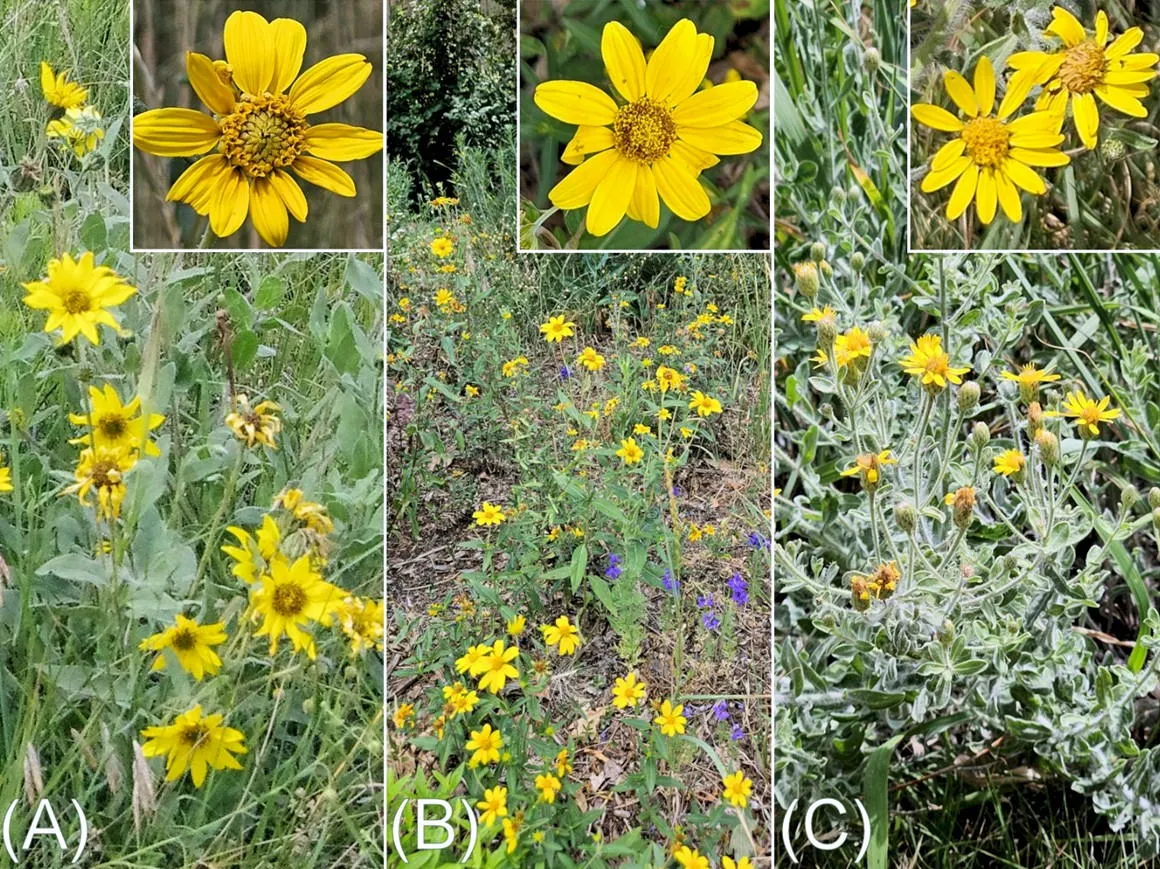By Tom Schweich
Most of us think of the Common Sunflower — Helianthus annuus L. — when we think of sunflowers. Linnaeus (1753) knew of it from collections made in Mexico and Peru. The earliest Colorado record is from the Platte River near Denver in 1871. However, the genetics of the common sunflower have been so manipulated for agricultural uses that it is unclear whether the common sunflower today is closely related to the original Colorado common sunflowers. Nevertheless, we have at least three sunflower-like things in bloom now along Golden’s trails and in open spaces that are native to Golden.
(A) The “Little Sunflower” — Helianthus pumilus Nutt. — is a small perennial subshrub that is found in every open space and in natural areas of city parks. While we think of scientific names as being Latin, the name is Greek [helios, sun, and anthos, flower] so that the scientific name quite literally means “sunflower.” “Pumilus” is Latin for small or dwarf.
The natural range of the Little Sunflower is from the Front Range of Colorado and Wyoming, to about 43° North, and then very sparingly into Montana and Saskatchewan. Thomas Nuttall described the Little Sunflower from plants he collected in 1834 on plains of the Platte while enroute to Oregon Territory.
Short stiff hairs give this plant a sandpapery feel making it easy to recognize.
(B) “Showy Golden Eye” — Heliomeris multiflora Nutt. — is a medium size forb (non-woody perennial) with a long blooming season that also readily re-seeds. Mine usually bloom from May well into August. Lesser goldfinches seem to be particularly attracted to the seed of Showy Golden Eye.
Our plant was described by Thomas Nuttall (1848) from a collection by William Gambel in the mountains of “Upper California” as the state of California was called then. "Helios" is Greek for "sun," "meris" for "part of" and the “multiflora” refers to the many flowers this plant will have over the growing season.
Showy Golden Eye is primarily a Rocky Mountain species but is also found across southern Nevada to eastern California.
(C) “Hairy False Goldenaster” — Heterotheca villosa (Pursh) Shinners — is not really a sunflower, maybe more like a second cousin to sunflowers. It is, however, one of the common subshrubs in Golden and has been found in every Golden open space. It is also adventive in Golden gardens. Ubiquitous in Jefferson County, though not often collected in the southwest corner of the county, it is similarly ubiquitous throughout Colorado. Our plant has long soft hairs giving it a silvery appearance.
First collected along the Missouri River in 1811 by Thomas Nuttall, who took seeds with him back to England. In 1813, Fraser & Sons Nursery in London was selling plants of Hairy False Goldenaster to English gardeners. The first valid scientific description was by Frederick Pursh (1814) in his Flora of North America. Pursh probably described plants grown from Nuttall's seed collection, but Pursh did not credit Nuttall, with whom there was no love lost.
Seed is readily available for all three species, and they are easily grown in Golden’s gardens.





